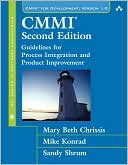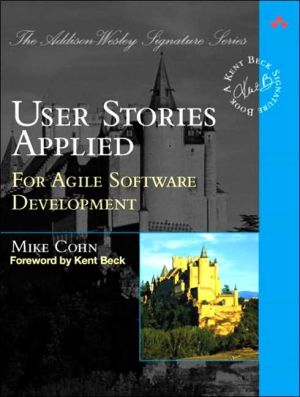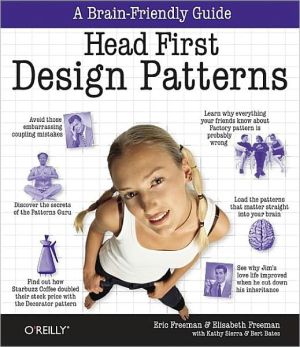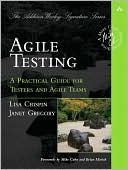CMMI: Guidelines for Process Integration and Product Improvement
Search in google:
CMMI® (Capability Maturity Model® Integration) describes best practices for the development and maintenance of products and services across their entire lifecycle. By integrating essential bodies of knowledge, CMMI provides a single, comprehensive framework for organizations to assess their development and maintenance processes, implement improvements, and measure progress. This book is a definitive reference for the most current release of CMMI (version 1.2). In the new edition, the authors have added tips, hints, and cross-references in the margins (in color) throughout the process areas to help you better understand, apply, and find more information about the content of the process areas. The book also now includes brief, insightful perspectives on CMMI written by people influential in the model’s creation, development, and transition. A new case study from Raytheon illustrates a real-world application of the model to a services organization. Whether you are new to CMMI or familiar with an earlier version, if you need to know about, evaluate, or put the latest version of CMMI into practice, this book is an essential resource.The book is divided into three parts. Part I offers the broad view of CMMI, beginning with basic concepts of process improvement. It describes the process areas, their components, and their relationships to each other. It explains the model’s two representations as well as paths to the adoption and use of CMMI for process improvement and benchmarking.Part II, the bulk of the book, details the generic goals and practices and the twenty-two process areas now comprising CMMI. The process areas are organizedalphabetically by acronym for easy look-up. Each chapter includes goals, best practices, and examples for a particular process area. The two CMMI representations are described so that you will easily see their similarities and differences and thereby be better able to choose the right approach for your organization.Part III contains several useful resources, including CMMI-related references, acronym definitions, a glossary of terms, and an index.
List of Perspectives xiPreface xiiiAcknowledgments xxiAbout CMMI for Development 1Introduction 3About Capability Maturity Models 4Evolution of CMMI 9CMMI for Development 18The Scope of CMMI for Development 21The Group of IPPD Additions 22Resolving Different Approaches of CMMs 22Choosing a Representation 22Continuous Representation 23Staged Representation 23Comparison of the Continuous and Staged Representations 24Factors in Your Decision 24Why Not Both Representations? 25Your Approach to Process Improvement 28=970 14$lScenario 1 28=970 14$lScenario 2 30Process Area Components 31Required, Expected, and Informative Components 31Required Components 31Expected Components 31Informative Components 32Components Associated with Part Two 32Process Areas 33Purpose Statements 34IntroductoryNotes 34Related Process Areas 34Specific Goals 34Generic Goals 34Specific Goal and Practice Summaries 35Specific Practices 35Typical Work Products 35Subpractices 36Generic Practices 36Generic Practice Elaborations 36Supporting Informative Components 37Notes 37Examples 37Amplifications 38References 38Numbering Scheme 38Typographical Conventions 39Representation-Specific Content 39Additions 39Tying It All Together 43Understanding Levels 43Structures of the Continuous and Staged Representations 44Understanding Capability Levels 46Incomplete 47Performed 47Managed 47Defined 47Quantitatively Managed 48Optimizing 48Advancing Through Capability Levels 48Understanding Maturity Levels 52Initial 53Managed 53Defined 54Quantitatively Managed 54Optimizing 55Advancing Through Maturity Levels 55Process Areas 60Generic Goals and Practices 63Representation Comparison 65Equivalent Staging 65Relationships Among Process Areas 71Four Categories of CMMI Process Areas 71Process Management 72Basic Process Management Process Areas 72Advanced Process Management Process Areas 73Project Management 76Basic Project Management Process Areas 77Advanced Project Management Process Areas 77Engineering 81Recursion and Iteration of Engineering Processes 84Support 85Basic Support Process Areas 85Advanced Support Process Areas 91Using CMMI Models 93Adopting CMMI 97Your Process Improvement Program 102Selections That Influence Your Program 106CMMI Models 107Using CMMI Appraisals 107Appraisal Requirements for CMMI 108SCAMPI Appraisal Methods 108Appraisal Considerations 109CMMI-Related Training 113Case Study: Applying CMMI to Services at Raytheon 119The Organization and Its Process Dilemma 122History 123Success at Last 126Key Roles That Contributed to Success 130Approach to Interpreting CMMI for Services 131Process Artifacts 131Lifecycle Model 137Epiphanies 145Task Orders Are Equivalent to Projects in the Traditional Application of the Model 145Every Project Shares the Same (Unchanging) Five Requirements 146The Execution and Monitoring of Customer-Assigned Tasks Constitutes the Core of the Verification and Validation Processes 146The Relative Time Spent for Development versus Delivery in Services Is Reversed from That of Products 147Lessons Learned 147Generic Goals and Generic Practices and the Process Areas 149Generic Goals and Generic Practices 151Causal Analysis and Resolution 177Configuration Management 191Decision Analysis and Resolution 207Integrated Project Management +IPPD 221Measurement and Analysis 253Organizational Innovation and Deployment 273Organizational Process Definition +IPPD 293Organizational Process Focus 315Organizational Process Performance 335Organizational Training 349Product Integration 367Project Monitoring and Control 387Project Planning 401Process and Product Quality Assurance 427Quantitative Project Management 439Requirements Development 465Requirements Management 487Risk Management 499Supplier Agreement Management 519Technical Solution 537Validation 565Verification 579The Appendices and Glossary 597References 599Publicly Available Sources 599Regularly Updated Sources 602Acronyms 603CMMI for Development Project Participants 607Product Team 607Sponsors 609Steering Group 610Configuration Control Board 611Glossary 613Book Contributors 639Index 651








